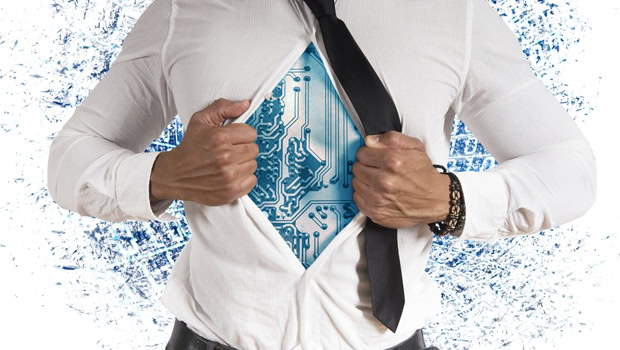The Artificial Pancreas Guinea Pig

There’s a sleepy tempo that often accompanies evening fundraisers for good causes. Attendees use up their social energy during the cocktail hour and begin to lose steam as the long work day catches up with them. Once the lights dim and the speeches begin, eyelids grow heavy.
This was the pleasant way a recent JDRF New England event was progressing until Thomas Brobson took the floor and began to talk about advances in artificial pancreas technology. Suddenly, the energy in the room crackled as parents of children with T1 felt a surge of hope. Listeners sat up straight and began to scratch hasty notes. There were even a few audible gasps.
That’s because Brobson, JDRF’s national director of research and investment opportunities, was detailing the leaps AP technology has made in just the last decade. For Brobson, these advances are not just something he’s read about, but something he’s experienced. Brobson believes integrated technology will play a huge part in shaping a functional T1 cure in the near future. That’s one reason why he is a dedicated T1 tech geek who uses a pump and a CGM.
“I have a lot of stuff attached to my body,” Brobson said. “It’s really fun going through TSA at the airport.”
Brobson has gleefully volunteered to try out new tech solutions to control BG. When JDRF committed to funding research in artificial pancreas technology in 2006, Brobson raised his hand to be a guinea pig. In 2007, he began to take part in human clinical trials of artificial pancreas technology through the University of Virginia Center for Diabetes Technology.
His first time being hooked up to an AP was definitely a clinical experience. He had IVs in both arms, one for insulin and one for glucagon, and he was forced to wear as heavy of clothing as he could stand to keep liquids from clotting. While the AP delivered great BG control, Brobson says it obviously wasn’t designed to be practical.
“Going to the bathroom involved me and 3 other people,” Brobson said.
But everything changed in AP development with the advent of the smartphone and wireless technology. When Brobson went back for another trial in the fall of 2012, the new technology had improved to such an extent that he didn’t have to stay in the hospital. The new design involved smart pumps and CGMs working in concert to keep BG in optimal range with minimal user input. Brobson simply had to set a few parameters using a smartphone-like device.
“Literally, they just handed me this phone and said, ‘Go live your life,’” Brobson said.
It was better than that: they told him it was mandatory to eat out at restaurants. Brobson said he needed very little encouragement; he went right out to a restaurant and had a cheeseburger and an ice cream sundae (he couldn’t bring himself to eat fries with that, however). The AP-like system performed just as expected, automatically working to keep his BG in optimal range. Throughout his short time testing out the system, Brobson had to do very little, only occasionally adjusting the pump with two simple-to-operate buttons on his phone-like device.
It should be noted here that this outpatient device did not include glucagon, an essential ingredient in mimicking the closed-loop system of a functioning pancreas. The biggest hurdle to including glucagon in such a system is that researchers haven’t yet devised a reliable way to maintain the substance in usable form at room temperature. (Some people with T1 diabetes who follow AP progress believe that any system must include glucagon to be considered a true AP.)
Brobson notes that there are many different opinions of what a T1 cure looks like, and all of them have validity. He believes a cure must make it possible for people with T1 to not have to constantly think about having T1, much like people with high blood pressure often don’t have to constantly think about their condition.
For the next step, researchers at the University of Virginia now want to have people with T1 test out the AP-like technology for 6 months at a time. To fund that trial will require raising some $10 million. Once the next phase is funded, if the trial protocol allows repeat volunteers, you can guess who might be first to raise his hand to take part.
Thanks for reading this Insulin Nation article. Want more Type 1 news? Subscribe here.
Have Type 2 diabetes or know someone who does? Try Type 2 Nation, our sister publication.